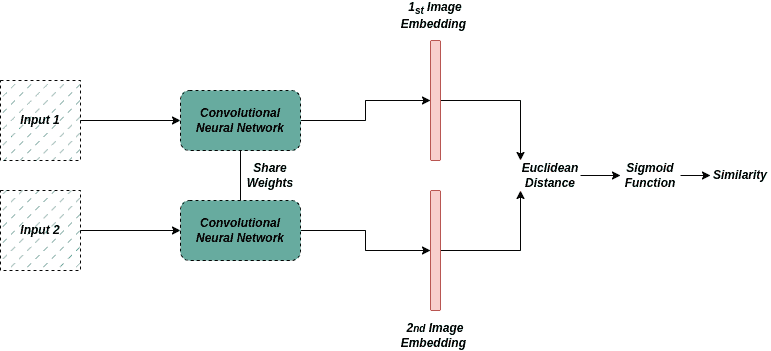1. Introduction
In this tutorial, we’ll explore the Siamese Network, also known as the twin neural network, a deep learning architecture that is widely used and has become increasingly popular in computer vision.
In particular, we’ll introduce its training phase and analyze its advantages and disadvantages.
2. What Are the Siamese Networks?
Siamese Networks were introduced by Gregory Koch in 2015.
The name “Siamese” comes from the fact that the network is designed with two identical sub-networks, each processing a different input sample with the same weights. The outputs from these two sub-networks are then compared in the final layer in order to generate a prediction.
Therefore these networks are used in image recognition tasks in order to decide whether two images are different or not. Siamese Networks have proven to be particularly helpful for situations with little data as they can be trained on small amounts of labeled data and then be fine-tuned on larger datasets.
3. The Architecture of Siamese Networks
First of all, both neural network branches have the same neural network weights, and they both learn a common representation for both inputs but are trained separately on different inputs. This fact allows the network to learn how to compare images rather than how to classify them.
The architecture of a Siamese Network consists of the following:

The convolutional and pooling layers are responsible for extracting meaningful features from the image samples of each network. The final layer in each branch is the comparison layer, which generates an embedding, a compact representation of the data sample. The comparison layer is usually designed in several ways, which depend on the certain task. Typical examples are the Euclidean distance or the correlation similarity. The embedding is then driven through a comparison function in order to produce a prediction that decides if the two data samples are the same.
Therefore the final output of the Siamese Network is a similarity score, which indicates how similar or different the two input images are. This score can be used to make a prediction, such as whether two face images belong to the same person or not.
4. Training of Siamese Networks
The training of Siamese Networks can be supervised or unsupervised. In supervised learning, the network is trained on labeled data with known ground-truth labels. In unsupervised learning, the network is trained on unlabeled data and must learn to generate its own labels based on the input images.
The loss function for Siamese Networks is typically based on the similarity score generated by the comparison function. Usually, the triplet or contrastive loss is used for learning. In face recognition, the loss function could be the cross-entropy loss between the predicted similarity score and the true label.
The training of twin networks should be done with balanced datasets so that the two networks are equally trained. The Siamese Network needs to learn how to distinguish between similar and dissimilar images, and a balanced dataset provides a more representative sample of both types of images.
5. Advantages and Disadvantages
Siamese Networks have several advantages and limitations as well. It is important to consider both when choosing a suitable network architecture for a particular task.
First of all, one of the most important aspects of Siamese Networks is their robustness to image transformations such as rotations, translations, and scaling. They can learn to perform the comparison task without the need for manual feature extraction. Also, they can handle small datasets effectively because they use the same weights for both branches. Another advantage is that they learn a reduced number of parameters because they share the same weights.
On the other hand, Siamese Networks usually work well with datasets that include images with emphatic differences. Furthermore, these networks have proven to be sensitive to overfitting and struggle with performance metrics which are hard to totally describe them.
The main benefits and limitations are summarized in the table below:
Advantages
Disadvantages
Robust to transformations
Complexity
Computationally efficient
Performance limitations
End-to-end learning
Overfitting
6. Applications of Siamese Networks
Siamese Networks have found wide use in various applications of image recognition due to their ability to learn representations and compare them effectively. In face recognition, they are used to compare two face images and determine if they belong to the same person or not.
In object-tracking tasks, they can be employed to track different objects in video sequences. Furthermore, they can be used in signature verification to verify the authenticity of signatures.
Finally, Siamese Networks can be used in biometric authentication systems, image verification, or in one-shot learning, where the network must recognize a new object after seeing only one example of it.
7. Conclusion
In this article, we walked through the Siamese Networks, a class of deep learning architectures that are employed by designing two identical sub-networks.
In particular, we introduced this type of network, talked about their training phase, and mentioned their benefits and limitations along with their main usages.